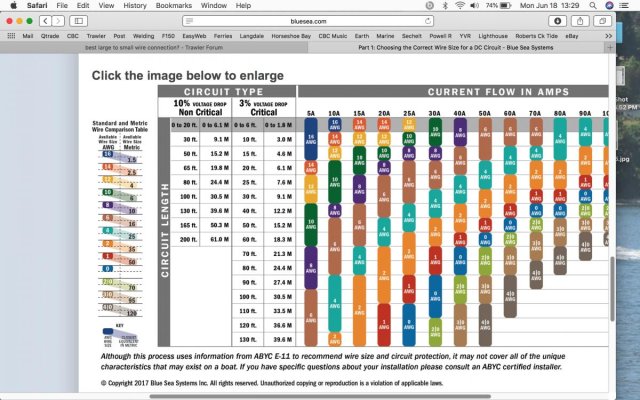Only issue w above is they ALL go against ABYC recommendations.
Will it work... likely yes initially but can give a false sense of security and lead to issues later.
I would do any of those in an emergency to get home but not as a permanent install.
Ksanders is spot on... do the troubleshooting to identify the issues and then fix that.
Trimming out strands if your going to a terminal block to feed a wire sounds bad, but it makes zero difference since your shrinking down to a smaller wire anyway.
You can get terminal blocks with one that has a big bolt and nut to take a large lug. And you can get small gauge terminal ends to go on small wires with a large ring to attach to that bolt.
You could also just strip off the insulation and wrap the smaller gauge wire round the bolt, put it under the larger lug, nut it down tight, then zip tie the wire onto the larger wire so it cant work and shake and bend and break the smaller wire.
Another idea, you could use a nut and bolt and bolt the wires together, then heat shrink tubing over the entire connection.
Another idea, get some soft copper tube, cut off 1/2 inch. strip wire ends. slide copper tube over the wire, twist or place copper wires together and use a vice grip or crimper to squeeze the connection together. If worried about corrosion use oxguard. Cover whole thing with heat shrink.
While it would work, likely draw the ire of a standards body.
I have actually done the soft copper tube idea to eliminate plastic wire nuts in several AC junction boxes on my boat. I joined as many as 4 wires (12-3 gauges) with a short piece of soft copper tube crimped down using a vice grip and heat shrink tubed for insulation.
A few times I have had to make modifications, I was able to uncrimp the soft copper and reuse it again. I have lots of various sized soft copper tubing leftover from various jobs.
I used standard metal junction boxes from Lowes or Home Depot, I painted them with primer, and used screw down wire clamps to hold the wires from being pulled out of the metal boxes. I never have a rust issue yet doing that and my electric system is so tight I run GFCI and AFCI breakers on my entire electric system with no nuisance trips. My boat built in 1970 came with a Square-D electric panel, and couple years ago decided to replace the breakers with combo GFCI-AFCI breakers, and replaced a lot of the AC wiring. Those breakers are the latest engineering, and work ok. Earlier AFCI breakers had issues. My cruisair heat pump does not trip the combo breaker, vacuums work, drills work fine too. I left the fridge out of any GFCI protection just in case since a nuisance trip would be bad.
Those combo GFCI-AFCI breakers work fine with my old Onan gen and a 3000 watt MSW inverter. New combo breakers off Ebay can get good prices compared to Home Depot. Last one I paid $17 for a 20 amp breaker.


